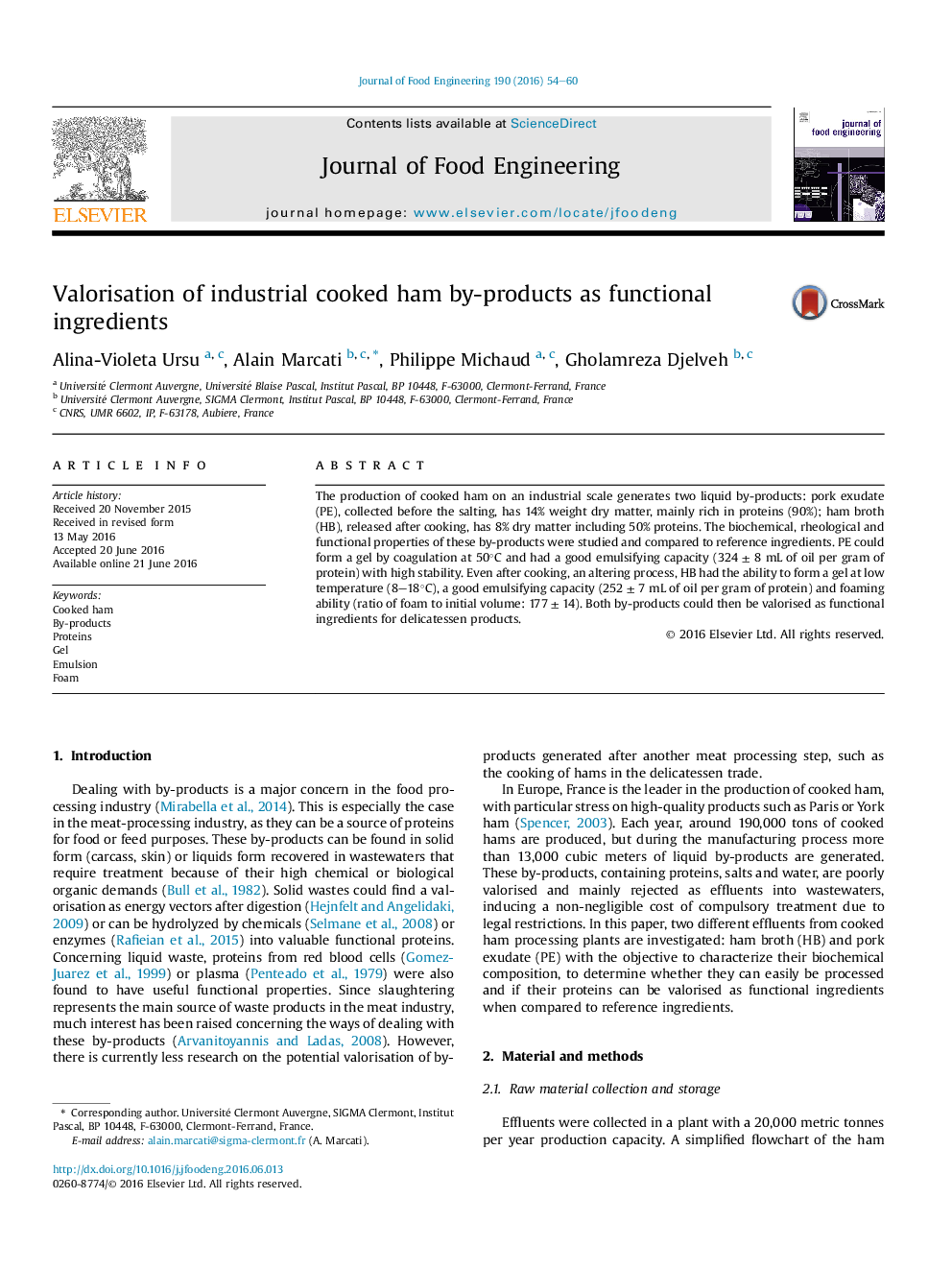| Article ID | Journal | Published Year | Pages | File Type |
|---|---|---|---|---|
| 222563 | Journal of Food Engineering | 2016 | 7 Pages |
•Valorisation of 2 cooked ham plant effluents: ham broth and pork exudate.•4–15% weight of proteins including collagen can be recovered from effluents.•Ham broth has low-temperature gelling ability, good foaming/emulsifying capacities.•Pork exudate coagulates at 40°C and has good emulsifying and foaming properties.
The production of cooked ham on an industrial scale generates two liquid by-products: pork exudate (PE), collected before the salting, has 14% weight dry matter, mainly rich in proteins (90%); ham broth (HB), released after cooking, has 8% dry matter including 50% proteins. The biochemical, rheological and functional properties of these by-products were studied and compared to reference ingredients. PE could form a gel by coagulation at 50°C and had a good emulsifying capacity (324 ± 8 mL of oil per gram of protein) with high stability. Even after cooking, an altering process, HB had the ability to form a gel at low temperature (8–18°C), a good emulsifying capacity (252 ± 7 mL of oil per gram of protein) and foaming ability (ratio of foam to initial volume: 177 ± 14). Both by-products could then be valorised as functional ingredients for delicatessen products.
